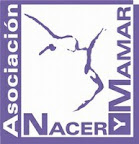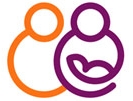Efectos de la deambulación en el trabajo de parto y parto: Lack of Effect of Walking on Labor and Delivery
ARTICULO ORIGINAL: Los resultados de este estudio fueron que no habia diferencias significativas entre las mujeres que pudieron caminar y las que no en refrencia a tipo de parto y resultados perinatales. Como conclusión decir que el caminar ni perjudica ni beneficia al parto. Mostramos resumen en Inglés.
Bloom, Steven L., McIntire, Donald D., Kelly, Mary Ann, Beimer, Heidi L., Burpo, Rebecca H., Garcia, Marcy A., Leveno, Kenneth J.Lack of Effect of Walking on Labor and Delivery. N Engl J Med 1998 339: 76-79
Texto Completo: ENLACE
ABSTRACT
Background and Methods Walking during labor may reduce patients' discomfort and improve outcomes. We conducted a randomized trial of walking during active labor to determine whether it altered the duration of labor or other maternal or fetal outcomes. Women with uncomplicated pregnancies between 36 and 41 weeks' gestation and in active labor were randomly assigned either to walking or to no walking (usual care). Pedometers were used to quantify walking, and the time spent walking was recorded.
Results Of the 536 women assigned to the walking group, 380 actually walked. Their mean (±SD) walking time was 56±46 minutes. There were no significant differences between the women assigned to the walking group and the 531 women assigned to the usual-care group in the duration of the first stage of labor (6.1 hours in both groups, P=0.83), the need for labor augmentation with oxytocin (23 percent vs. 26 percent, P=0.25), and the use of analgesia (84 percent vs. 86 percent, P=0.59). Similarly, the percentages of women requiring delivery by forceps (4 percent vs. 3 percent, P=0.35) and cesarean section (4 percent vs. 6 percent, P=0.25) were not significantly different. These labor and delivery outcomes were unrelated to walking in both nulliparous and parous women. The infants' outcomes were also similar in the two study groups.
Conclusions Walking neither enhanced nor impaired active labor and was not harmful to the mothers or their infants.







 Anterior: Ayunar en el parto, reliquia o requisito. Fasting in labor: relic or requirement.
Anterior: Ayunar en el parto, reliquia o requisito. Fasting in labor: relic or requirement.

 Web MatronasUbeda by
Web MatronasUbeda by 